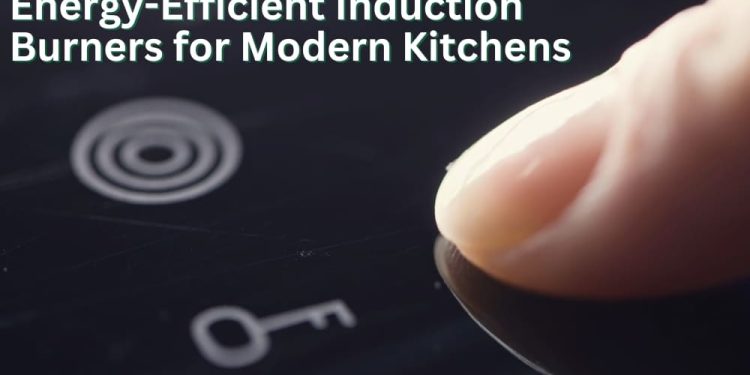Induction burners have revolutionised how we cook, offering a blend of efficiency, safety, and precision that traditional gas and electric stoves cannot match. As Australia prioritises energy conservation and sustainability, induction burners have become popular in modern kitchens. In this article, we will explore the benefits of induction burners and delve into the energy-efficient upgrades that make them a must-have for Australian households.
Switching to a better plan? You may already have an energy plan but want more power or to shop for a better deal.
If your goal is to get more electricity and minimise the cost of your gas and electricity bills, switch to a better plan now!
How induction burners work
Unlike traditional gas or electric stoves, induction cooktops utilise electromagnetic induction to heat cookware directly.
When activated, a copper coil beneath the cooking surface generates a magnetic field. When compatible cookware (typically made of ferromagnetic materials like cast iron or certain stainless steel) is placed on the burner, the magnetic field induces an electric current within the cookware. This current causes the cookware to heat up, transferring energy directly to cooked food.
What are the energy efficiency advantages of induction burners
Induction burners are significantly more energy-efficient than traditional stoves for several reasons:
- Direct heat transfer: Induction burners eliminate the need for intermediate heating elements, such as coils or burners, which can lose energy during heat transfer. This direct heat transfer results in significantly higher energy efficiency than traditional methods.
- Instantaneous heat: Unlike gas or electric stoves that require time to heat up, induction burners provide almost immediate heat. This reduces energy waste and allows for faster cooking times.
- Precise temperature control: Induction burners offer precise temperature control, allowing you to set the exact temperature for different cooking tasks. This prevents overcooking or undercooking food, saving energy and reducing food waste.
- Automatic pan detection: Many modern induction burners feature automatic pan detection, which turns off the burner when cookware is removed. This prevents unnecessary energy consumption and improves safety.
- Boost mode: Induction burners often have a boost mode that provides extra power for rapid heating, such as when boiling water. While this mode consumes more energy, it can be used efficiently for specific tasks, saving energy overall.
Additional energy-saving tips for induction burners

- Use the right cookware: Ensure you use cookware compatible with induction burners. Look for cookware made of materials like cast iron or stainless steel that contain magnetic properties.
- Cover pots and pans: Covering your pots and pans while cooking helps to retain heat, reducing cooking time and energy consumption.
- Adjust power levels: Use the appropriate power level for each cooking task. Lower power levels can be used for simmering or warming food, while higher levels are suitable for boiling or frying.
- Choose the right burner size: Choose a size appropriate for your cookware. Using a burner that is too large can waste energy.
- Clean regularly: A clean burner surface ensures efficient heat transfer and prevents energy loss.
What are the energy-saving features to look for in induction burners
When choosing an induction burner, consider the following features that can enhance energy efficiency:
- Booster function: This feature allows rapid heating, reducing cooking times and energy consumption.
- Timer function: Set timers to turn off the burner, preventing unnecessary energy use automatically.
- Bridge function: This feature allows you to combine two burners into a larger cooking zone, ideal for oversized pots or pans.
- Pan detection: Some induction burners automatically detect the presence of cookware, preventing energy waste when the burner is empty.
- Energy-saving mode: This mode reduces power consumption when the burner is inactive.
Additional benefits of induction burners
Beyond energy efficiency, induction burners offer several other advantages:
- Safety: The cooktop surface remains cool to the touch, reducing the risk of burns.
- Speed: Induction burners heat up quickly, reducing cooking times.
- Precision: Precise temperature control allows for more consistent results.
- Easy cleaning: The flat, smooth surface is easy to clean and maintain.
Read more about:
What are the considerations for induction burners?
When selecting an induction burner for your Australian home, keep the following factors in mind:
- Climate: Consider the climate in your region. Induction burners can be especially beneficial in hot climates, as they do not generate excess heat.
- Power supply: Ensure your home’s electrical system can handle the power requirements of an induction burner.
- Compatibility: Ensure your cookware is compatible with induction burners. Look for pots and pans of ferromagnetic materials, such as cast iron or stainless steel.
- Power requirements: Check the induction burner’s power requirements to ensure your electrical system can handle the load.
- Features and functionality: Consider the specific features and functionality important to you, such as boost mode, bridge function, and automatic shut-off.
- Brand reputation: Choose a reputable brand with a record of producing high-quality induction burners.
- Cost: While induction burners may have a higher upfront cost, their energy efficiency and long-term savings can make them a worthwhile investment.
Induction burners offer a modern, energy-efficient solution for Australian kitchens. Their ability to directly heat cookware, combined with features like precise temperature control and automatic shut-off, makes them a valuable investment for those seeking to reduce their energy consumption and improve their cooking experience. By carefully considering the factors discussed in this article, you can select the best induction burner to meet your needs and contribute to a more sustainable future.


















